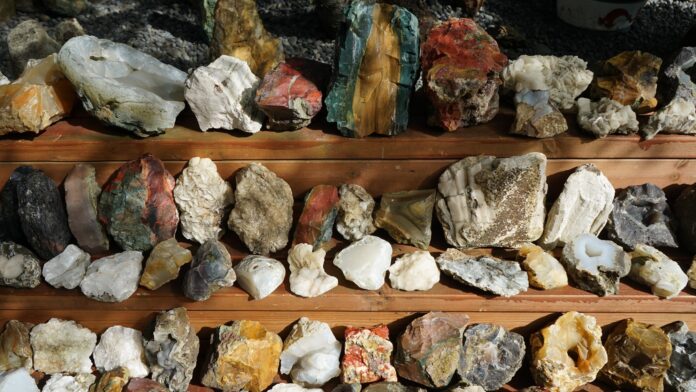Hobbies stimulate your imagination, brain, and future goals. What do you do when you feel like you’ve run out of hobby ideas?
Turn back to one of the oldest hobbies around—collecting!
Did you have a rock and mineral collection or a box of seashells growing up?
These are great starting points.
Let’s delve a little deeper into different types of collections.
Great Starter Ideas for Collecting Hobbies
It’s natural to rush into collecting, but consider factors like price and space. For example, some collections require extra care, like artifacts. Vintage textiles, pottery, and paper artifacts need temperature-controlled, tamper-proof cases.
Instead, start small with the following ideas:
- Coins (currency, challenge coins, tokens, etc.)
- Buttons, broaches, and other accouterments
- Stamps and small paper-based ephemera
- Seashells and sea glass
- Small fossils
You can find plenty of affordable hobby specimens and small collectibles at garage sales, estate sales, antique stores, and online shops like eBay.
Since the above items are so small, you can store them in empty shoeboxes cushioned with fabric or tissue paper. Empty candy boxes work great since each tray has tiny, individual compartments. Needlework boxes, medication containers, and art supply bins also work.
Collecting Larger Items
Large items aren’t necessarily more expensive than small collectibles.
For example, do you love stuffed animals?
Collecting Toys
You could start a plushie collection at little cost, including storage. Keep plush collectibles safe in airtight containers, storage bags, and rented storage units. These types of collections are a big hit at state fairs.
If you want to grow the value of your stuffed animal collection, you could always focus on a particular niche. An excellent example of this is the beanie baby craze of the 1990s. You could also focus on a specific “species,” like an alpaca stuffed animal collection.
Other large collectibles to consider include:
- Antique tools (building, gardening, art supplies, etc.)
- Large pottery, costumes, and artifacts
- Vintage electronics
- Large fine art pieces (sculptures, paintings, etc.)
- Old record players, gramophones, etc.
- Antique cars, tractors, carriages, and other vehicles
Some of the above items, like vintage cars and fine art, require additional storage accommodations, including temperature-controlled equipment. Storage units accommodate cars, but you’ll need a warehouse space if you intend to grow your collection.
Storing Collectibles
Books are another popular collectible that can quickly take up a lot of space. Fortunately, you can easily store hundreds of books inside one storage unit. One small unit can hold an entire bedroom’s worth of belongings.
You can always donate your collections to local museums, as well. This option is ideal for highly-valuable artifacts, including those important to the community. It doesn’t get better than museum-quality storage, either!
Take Fun Hobbies to New Heights
Collecting hobbies create a world of possibilities. Even better, collections grow in value, producing valuable (and priceless) heirlooms for new generations.
Think about what interests you most to start your own collections. Don’t forget to invest in quality display cases and storage.
Do you need more inspiration on your hobby quest?
Follow the blog to stay updated on new ideas!










